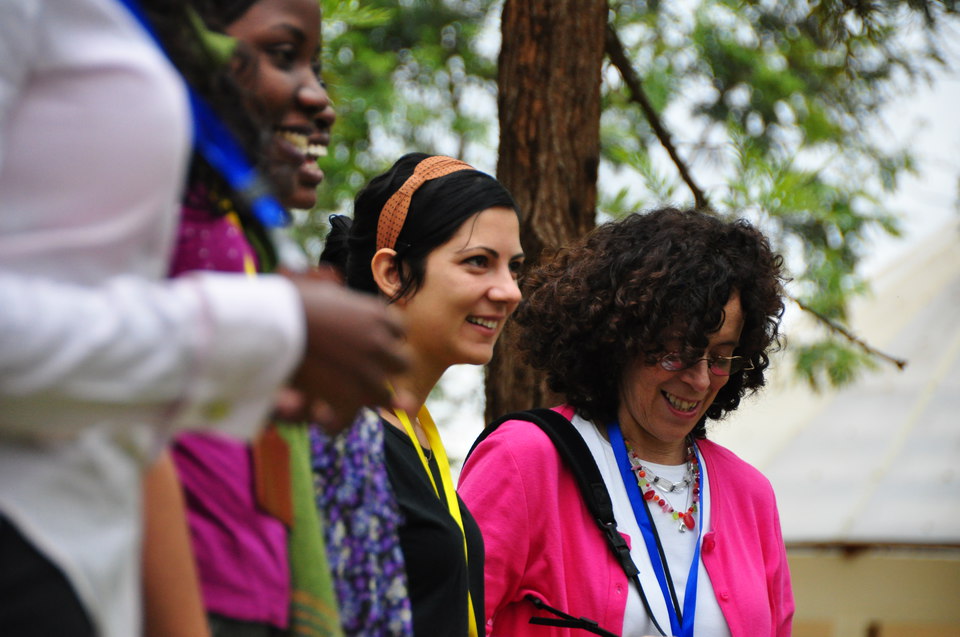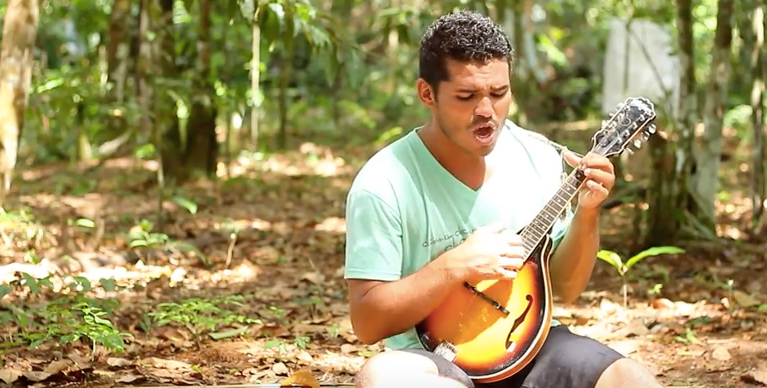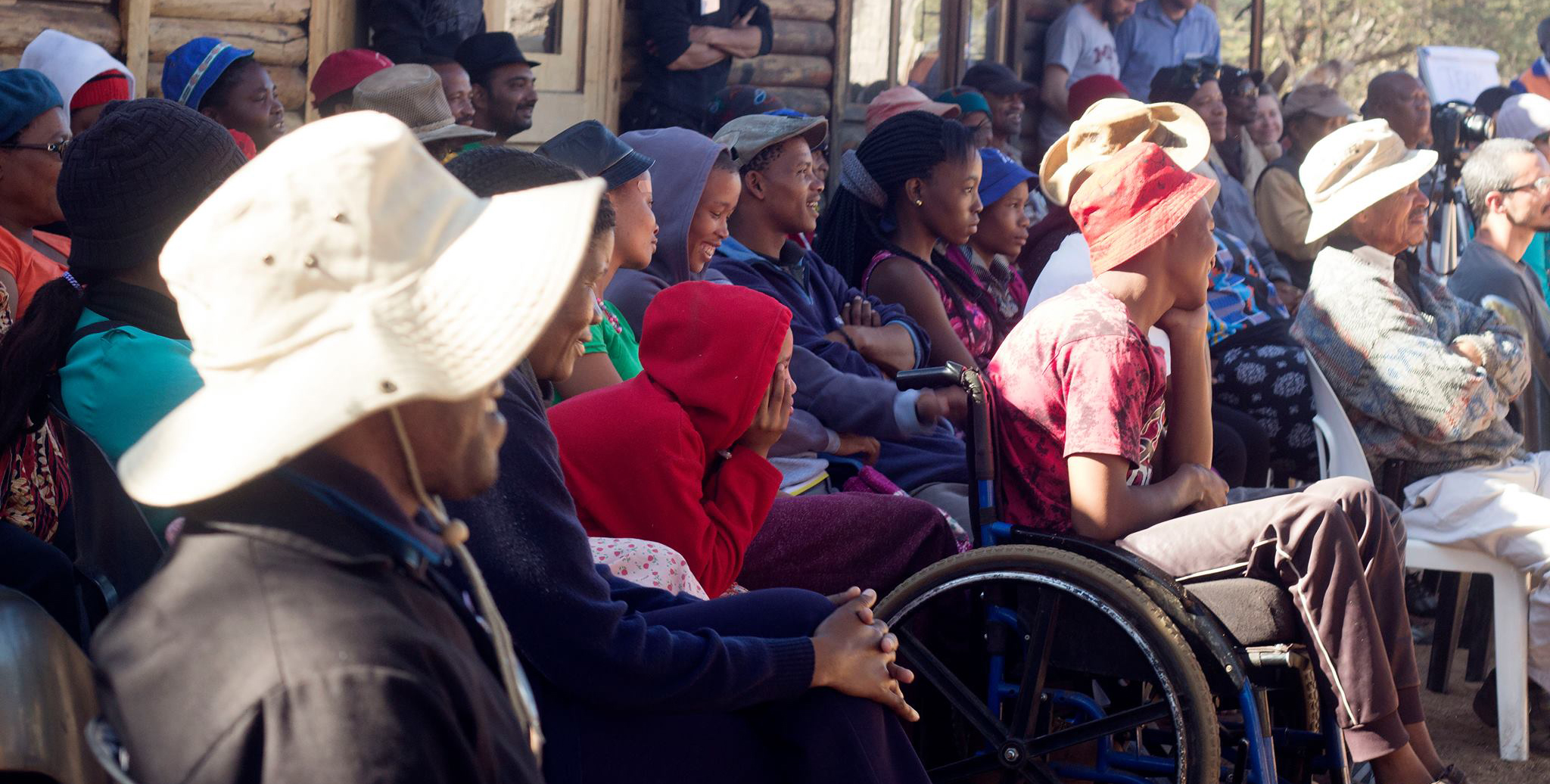To Best Support Innovators, IDIN’s Network Coordinator Uses Design Concepts & Her Own Innovative Approach

When the International Development Innovation Network was first created in 2012, one of its main goals was to better support and connect the alumni of International Development Design Summits around the world.
Today, that Network is growing faster than ever, with more than 450 members in over 50 countries around the world.
Recently, I sat down with IDIN’s Network Coordinator, Jona Repishti, to learn more about the ecosystem of support she’s designed for our incredibly diverse Network, and how she sees that ecosystem growing in future years.
As Network Coordinator, can you tell us a bit about how the Network came about?
I joined as a Network Coordinator, which was a new position, about two years ago. I came in with this task of engaging, strengthening and pushing forward the IDIN Network. And what I found out is that a community and network was already there. It had started about seven years ago when [IDIN Director and MIT D-Lab Founder and Co-Director] Amy Smith began developing design summits. I really took cue from what it was before I came on board.
It was a really supportive, engaged, and strong Network even to begin with. And since then, it’s grown to about 450 people. My goal has been to make it more purposeful and to pull in people in the margins to make it more effective and inclusive.
That’s a daunting task! Can you tell me more about how you approached building this ecosystem of support?
When I came in as Network Coordinator, I went on a listening tour. I talked to a few people that we call historical figures, who shaped not just summits, but also the way that we engage with our participants. I spent a lot of time talking to people who had been to multiple International Development Design Summits (IDDS), and a few Network members who had been active to see what kinds of support they found useful.
One thing that started to become clear was that people in our Network get inspiration at IDDS and start prototypes, but there is a dearth of resources after IDDS to continue prototyping, especially when they return home. So one of the first big projects that I launched was microgrants, small grants to help support the development of technologies after IDDS.
And then we started learning that there are different kinds of funding that people need at different times. So now our microgrant program is a three-part funding series. It starts with picogrants, which are very small grants to cover a discrete step in the prototyping process. Microgrants are the second step, and allow Network members to become part of a larger community. And then the third step, is the MIT D-Lab Scale-Ups fellowship, a $20,000 grant that allow people to start to work on their project almost full-time. We’re trying to cover the whole cycle of needs.
So this is one example of a Network support project, where we start with meeting the immediate need, but then specialize the resource as that need becomes clearer.
Absolutely, funding is a crucial aspect of the technology development process. I’m curious, what are some other areas of support and connection you’re focusing on?

One of the projects that started a little while ago, was the idea that for local innovators to get the support they need, they have to develop a local vision of innovation. So based on that discovered need, we started helping Network members create local chapters. The idea is to get people to get together, work together, and start developing projects that they can tackle as a small group rather than individuals. We have about five or six of those around the world now, and I’m working with them so they can articulate and act on their local vision for the chapter.
And these chapters take different flavors in different parts of the world. In Brazil, the chapter is engaged around the local innovation center there. In Tanzania, the chapter engages and supports post-IDDS projects. In Kenya, an emerging chapter is coming together around the idea of hosting an IDDS locally, so they’re starting with small get-togethers and planning events. This is another kind of effort that we’re doing to localize the Network.
It’s such a unique Network. How do you go about determining what kinds of support Network members want and need?
I’m always refining how I gather these needs, and based on what I hear, I tailor the programming. When I came on board, the first thing I did was take cue from a design concept that our Network is familiar with: “Ask, Observe, Try,” which is a way to talk to a lot of people to best understand what the users, our Network members, need.
I also did a series of field visits to Brazil, Tanzania, Ghana, Zambia, and Kenya to really see how Network members engage one they’re back in their home countries.
And then really trying different projects, and not just trying and not refining what happens afterward, but instead constantly getting feedback on how we can improve those projects to fit the needs of the Network.
More recently, I’ve used a business approach in my role as well, by thinking about it from the perspective of customer segmentation. It helps to think about the Network as discrete sub-groups that share similar characteristics. Thinking along these terms has been a powerful tool to help me identify remaining Network needs and aspirations.
Like the technologies our Network members develop, the Network itself is scaling. What are some of the growing pains around that, and how are we addressing them?
We’ve been going for breadth so far, bringing the widest possible variety of individuals into our Network. But now, I think we’re increasingly moving toward a more specialized model. Even with IDDS, we’re developing summits that are more themed in nature: humanitarian relief, medical technologies, desert livelihoods, and waste. We’re already specializing when we start, which will bode well for connecting communities of practice as we grow.
We also have to increasingly look at outside resources for ways of managing this growth. There are certain limitations to things that we can do with our resources. I really see IDIN being a Network of networks. We not only focus on providing opportunities within our Network, but also spend a lot of time connecting our Network members to other like-minded partners and organizations outside of IDIN who can support whatever their next step may be.
What are some of the projects you’re working on right now?
The kinds of projects that our Network does can be isolating and disheartening because timelines are so long. We’re really focusing on providing people that are working on projects with mentors, who don’t just have the skills and knowledge, but who can also be cheerleaders and supporters for their mentees. I think getting our mentorship program up and running is really going to be a great way to provide more camaraderie and support for people on that long, difficult path.
Our programming is also becoming more interconnected. We take a package approach to providing support. Funding alone and mentorship alone won’t make a difference, but if you combine those, and give ongoing opportunities for capacity building, and pair up people with students, the chances of that project growing and moving to the next stage will be a lot higher. That’s the hypothesis that we operate under right now.
We’re also thinking about how to use what could be constraints and challenges to our advantage. Right now, communications is a major challenge because our Network members are all over the world, some in very rural areas, but there are ways we can use that to make the Network better and stronger.
What’s your favorite part of your job as Network Coordinator?
I’m constantly inspired in this role because I have such a close-up view of the persevering, creative spirit of our Network. How they take on challenges head-on, and are always reaching out and helping one another is really exciting. I think this is always the thing that makes my job really stand out, is that I figure out ways to develop more of this kind of engagement and bring people into the fold, but it’s really the Network members that drive the work and inspire me with what they do.
Can you tell us what’s up your sleeve to better support IDIN Network members in 2016?
We have a few other exciting projects to be launched in the next six months, including an opportunity for people in the Network who have an inclination to teach design, prototyping, and technology dissemination. We’re giving them a small amount of funding to replicate what they learned at IDDS in their local communities, and to help them through our vast Network of academics and instructors to develop the right curriculum for that concept.
Another project is to continue the capacity building for our Network members, and focusing in on the gap of social enterprise and business skills. We’re figuring out ways in which we can pair Network members with incubators or accelerators in their countries.
And finally, we’re bringing in students and development professionals to work with people in our Network with active projects and social enterprises. Again, this is something we had been doing through the IDIN Consortium and classes, but we realized there is an ongoing need for people to recruit others with very specific skills to support their projects. We’re creating a repository of Network member needs so we can match students with a start-up job in rural Africa or Latin America.
Looking forward to it. Thanks so much, Jona!






